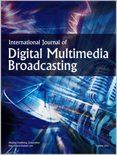
International Journal of Digital Multimedia Broadcasting
Scope & Guideline
Connecting Ideas in the World of Media Technology
Introduction
Aims and Scopes
- Digital Multimedia Systems:
The journal explores various aspects of digital multimedia systems, including their architecture, design, and implementation, particularly in broadcasting and communication. - Emerging Technologies in Broadcasting:
Research on new technologies such as machine learning, virtual reality, and blockchain that enhance multimedia broadcasting processes and applications. - Multimedia Communication Techniques:
The journal covers advanced communication techniques for multimedia content delivery, including image processing, signal transmission, and network optimization. - Cultural and Educational Applications:
Focus on the application of multimedia technologies in cultural preservation, education, and interactive learning environments. - User Interaction and Experience:
Investigating user interaction with multimedia systems, including the influence of design on user experience and engagement.
Trending and Emerging
- Artificial Intelligence and Machine Learning:
An increasing number of papers are focusing on the application of AI and machine learning techniques in multimedia processing, content creation, and broadcasting optimization. - Interactive and Immersive Technologies:
There is a notable rise in research related to virtual reality, augmented reality, and interactive multimedia experiences, highlighting their importance in modern broadcasting. - Big Data and Multimedia Analytics:
The journal is seeing a growing interest in the use of big data analytics for enhancing multimedia content delivery and user engagement, reflecting the importance of data-driven decision-making. - Cross-Cultural Communication in Multimedia:
Emerging themes related to the role of multimedia in cross-cultural communication are gaining traction, indicating a shift towards understanding global perspectives in digital broadcasting. - Sustainability and Energy Efficiency in Broadcasting:
Research focusing on energy-efficient systems and sustainable practices in multimedia broadcasting is becoming more prevalent, responding to the growing global emphasis on sustainability.
Declining or Waning
- Traditional Broadcasting Techniques:
Papers focusing on conventional broadcasting methods are becoming less frequent as researchers shift towards digital and interactive methods that leverage newer technologies. - Basic Multimedia Applications:
There is a waning interest in basic applications of multimedia that do not incorporate advanced technologies or innovative uses, as the field moves toward more complex and integrative approaches. - Static Content Delivery Systems:
Research on static multimedia content delivery, such as traditional video streaming, is declining in favor of dynamic, interactive, and personalized content delivery methods.
Similar Journals
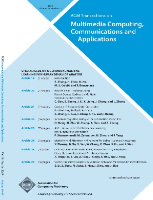
ACM Transactions on Multimedia Computing Communications and Applications
Unveiling Breakthroughs in Communication and Applications.ACM Transactions on Multimedia Computing, Communications, and Applications is a premier journal published by the Association for Computing Machinery (ACM), pivotal in the field of Computer Networks and Communications and Hardware and Architecture. With an impressive 2023 impact factor, this journal holds a commendable Q1 ranking in both its categories, solidifying its significance within the research community. The journal welcomes high-quality research that explores innovative technologies and methodologies in multimedia computing and communication as well as applications that enhance user experiences. While it remains a subscription-based journal, it provides unparalleled access to groundbreaking studies, serving as an essential resource for researchers, professionals, and students seeking to stay at the forefront of multimedia technologies. Spanning from 2005 to 2024, the journal offers a rich repository of knowledge and is committed to fostering advancements in the multimedia domain.

MULTIMEDIA TOOLS AND APPLICATIONS
Transforming ideas into applications in multimedia technology.MULTIMEDIA TOOLS AND APPLICATIONS, published by Springer, is a highly regarded journal in the fields of Computer Networks and Communications, Hardware and Architecture, Media Technology, and Software. Since its inception in 1995, this journal has established itself as a vital platform for disseminating innovative research and developments, maintaining a prominent position evidenced by its Q2 and Q1 rankings across various categories as of 2023. With an ISSN of 1380-7501 and an E-ISSN of 1573-7721, it continues to attract high-quality contributions from scholars and practitioners worldwide. Although it does not currently offer Open Access options, its impact is reflected in impressive Scopus rankings, placing it in the top quartiles in multiple categories, including a remarkable 10th rank in Media Technology. As the field evolves rapidly, the journal’s objectives encompass advancing multimedia technologies and exploring their multifaceted applications, making it an essential resource for researchers, professionals, and students seeking to stay at the forefront of this dynamic discipline. For more information, visit the journal's page to explore recent publications and submission guidelines.
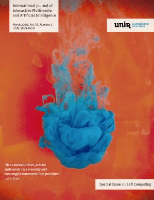
International Journal of Interactive Multimedia and Artificial Intelligence
Unlocking the Future of Interactive IntelligenceThe International Journal of Interactive Multimedia and Artificial Intelligence, published by UNIV INT RIOJA-UNIR in Spain, is a leading Open Access journal that has been fostering knowledge dissemination in the field since 2008. With an ISSN of 1989-1660 and an impressive impact characterized by its Q1 and Q2 rankings across major categories in Artificial Intelligence and Computer Science, the journal serves as a crucial platform for researchers and professionals eager to explore innovative applications and technological advancements. This journal is particularly distinguished by its commitment to high-quality peer-reviewed research, evident in its current Scopus rankings, which place it among the top percentile in various computer science domains, including Statistics, Signal Processing, and Computer Vision. The journal's scope encompasses a wide array of topics that intersect with multimedia and artificial intelligence, making it an invaluable resource for students and emerging scholars aiming to deepen their understanding and contribute to these vibrant fields. Through its Open Access model, it ensures that research is accessible to a global audience, thus enhancing the visibility and impact of the scientific discourse.
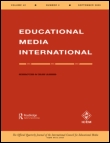
Educational Media International
Transforming learning experiences with cutting-edge research.Educational Media International, published by Routledge Journals, Taylor & Francis Ltd, is a premier journal in the interdisciplinary fields of Communication and Education, with a commendable Q2 ranking in both categories as of 2023. Established in 1978, this journal serves as a significant platform for the dissemination of innovative research that explores the evolving intersection of media technologies and educational practices. With an emphasis on both theoretical and practical applications, it addresses crucial topics such as digital learning environments, multimedia educational resources, and the impact of social media on education, making it an essential resource for researchers, professionals, and students alike. Located in the United Kingdom, Educational Media International not only contributes to the academic discourse but also reflects global trends and challenges in education, fostering a deeper understanding of the vital role media plays in shaping learning experiences worldwide.

Applied Computing and Informatics
Advancing Knowledge in Computing and InformaticsApplied Computing and Informatics, published by Emerald Group Publishing Ltd, is a prominent open-access journal that has been serving the academic community since 2011. With a focus on advancing the fields of Computer Science Applications, Information Systems, and Software, this journal has established itself as a noteworthy publication, currently ranking in the Q3 quartile for each of its categories in 2023. The journal is particularly recognized for its commitment to disseminating high-quality research, as evidenced by its impressive Scopus rankings—placing it in the 92nd percentile for Computer Science Applications and the 91st percentile for both Information Systems and Software. Based in Saudi Arabia, it adopts a global perspective, inviting contributions from researchers worldwide. With its open-access policy, Applied Computing and Informatics ensures that cutting-edge research is accessible to a broad audience, fostering collaboration and innovation within the computing and informatics disciplines. This journal is an essential resource for academics, professionals, and students seeking to keep abreast of the latest trends and developments in their field.
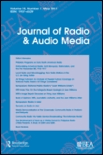
Journal of Radio & Audio Media
Illuminating the Power of Audio MediaThe Journal of Radio & Audio Media, published by Routledge Journals, Taylor & Francis Ltd, serves as a premier platform for research in the dynamic fields of radio and audio media studies. With a strong focus on innovative communication practices, this journal plays a vital role in shaping the discourse surrounding audio media, particularly in light of rapidly evolving technologies and cultural contexts. Holding a prestigious Q2 ranking in the Communication category and positioned within the 68th percentile among Social Sciences Communication journals in Scopus, it consistently showcases high-quality research that contributes to both academic knowledge and industry practice. Covering a diverse range of topics from audio production and podcasting to radio policy and audience studies, the journal encourages interdisciplinary collaboration and engagement. Although Open Access options are not available, the Journal of Radio & Audio Media remains committed to accessibility through educational initiatives and partnerships. Researchers, professionals, and students alike will find valuable insights and inspiration within its pages as they explore the influential power of audio in contemporary society.
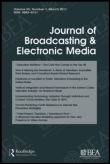
JOURNAL OF BROADCASTING & ELECTRONIC MEDIA
Connecting Research and Practice in BroadcastingThe JOURNAL OF BROADCASTING & ELECTRONIC MEDIA, published by Routledge Journals, Taylor & Francis Ltd, is a premier academic publication in the field of communication, officially recognized in the Q1 category for its exceptional quality and impact. With a rich history dating back to 1985, this journal serves as a vital platform for innovative research and critical discussions surrounding broadcasting and electronic media, addressing contemporary issues in digital communication, media technology, and audience studies. The journal boasts an impressive Scopus rank of #73 out of 511 in the Social Sciences - Communication category, placing it within the top 15% of its field. Researchers, professionals, and students alike benefit from its insightful articles that contribute to understanding the evolving landscape of media and communication. Although it does not currently operate under an Open Access model, its rigorous peer-review process ensures that published works meet high academic standards, sustaining its reputation as a cornerstone for scholarly discourse in the media industry.
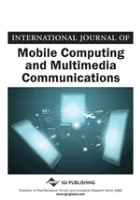
International Journal of Mobile Computing and Multimedia Communications
Unveiling Trends in Mobile Computing ExcellenceThe International Journal of Mobile Computing and Multimedia Communications, published by IGI Global, stands at the intersection of technology and connectivity, addressing the critical advancements in mobile computing and multimedia communications. With an ISSN of 1937-9412, this journal provides a platform for the dissemination of innovative research findings and insights, fostering collaboration and communication among researchers, professionals, and students within the field. Although currently indexed in the Q4 quartile for 2023 in Computer Networks and Communications, its rich archive of articles from 2009 to 2014 and 2016 to 2024 reflects the journal's ongoing commitment to exploring emerging trends, technologies, and methodologies that shape the future of mobile computing. While it is not an open-access journal, the high-quality research published here is crucial for advancing academic discourse and practical applications in an increasingly digital world. By encouraging submissions across a wide range of topics, International Journal of Mobile Computing and Multimedia Communications continues to enhance its reputation as a pivotal resource for scholars and industry experts alike.
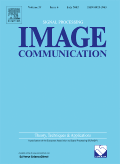
SIGNAL PROCESSING-IMAGE COMMUNICATION
Elevating Standards in Image Communication ResearchSIGNAL PROCESSING-IMAGE COMMUNICATION, published by Elsevier, is a leading journal in the fields of Computer Vision, Signal Processing, and Electrical Engineering. With an impressive range of Quartile rankings in 2023, including Q1 in Electrical and Electronic Engineering and Q2 in Signal Processing, this journal is vital for researchers and professionals seeking the latest advancements and comprehensive studies in image communication technologies. Issued in the Netherlands, SIGNAL PROCESSING-IMAGE COMMUNICATION has been an essential resource since its inception in 1989, fostering innovation and collaboration among academia and industry. The journal provides a platform for high-quality peer-reviewed research, addressing significant challenges and solutions in the convergence of image processing and communication. Although currently not an Open Access journal, it offers subscription options that ensure a broad dissemination of groundbreaking knowledge. With a robust reputation reflected in its Scopus ranks, this journal serves as an indispensable reference for students and experts aiming to stay at the forefront of developments in this dynamic field.
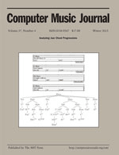
COMPUTER MUSIC JOURNAL
Advancing the Frontier of Musical InnovationComputer Music Journal, published by MIT Press, stands as a prominent platform for scholarly discourse in the intersection of music and technology. With its origins dating back to 1982, the journal spans an extensive range of topics, from computer-generated music and sound synthesis to interactive musical systems and multimedia art. Despite not being an open-access journal, it has garnered significant recognition, reflected in its rankings across various fields—placing 22nd in Music within Arts and Humanities and achieving a Q2 category status in Music for 2023. This publication is invaluable for researchers, practitioners, and enthusiasts alike, offering critical insights that expand the boundaries of musical composition and technological innovation. With its robust history and commitment to advancing the understanding of computer music, the Computer Music Journal continues to be a critical resource in both the academic and artistic communities.